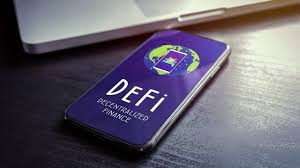In recent years, decentralized finance (DeFi) has gained significant traction as an alternative to traditional banking. Built on blockchain technology, DeFi eliminates intermediaries such as banks and financial institutions, allowing users to access financial services in a decentralized manner. This new paradigm has revolutionized lending, borrowing, and trading, making financial services more accessible and transparent.
As DeFi continues to evolve, it offers a compelling alternative to conventional financial systems by providing peer-to-peer transactions, enhanced security, and greater financial inclusivity. Whether you’re new to the space or looking to deepen your understanding, this guide aims to simplify the concepts and benefits of decentralized finance.
How Decentralized Finance Works
At its core, decentralized finance operates on blockchain networks like Ethereum, utilizing smart contracts to execute transactions automatically. Unlike traditional banks that rely on centralized authorities, DeFi applications (DApps) allow users to transact directly with one another, reducing costs and increasing efficiency.
Smart contracts, which are self-executing agreements coded into blockchain protocols, eliminate the need for intermediaries. They facilitate seamless transactions such as lending, borrowing, and staking, all while ensuring security and immutability. By leveraging blockchain’s transparent ledger system, DeFi enhances financial autonomy, giving users complete control over their assets.
Benefits of Decentralized Finance
One of the most appealing aspects of decentralized finance is its accessibility. Unlike traditional financial institutions that require credit checks and extensive documentation, DeFi platforms allow anyone with an internet connection to participate. This inclusivity empowers individuals in underserved regions who may not have access to conventional banking.
Additionally, DeFi offers transparency and security through blockchain technology. Since all transactions are recorded on a public ledger, users can verify activities without relying on third parties. This reduces fraud risks and enhances trust in financial interactions. Moreover, DeFi eliminates hefty banking fees, making transactions cost-effective and efficient.
Key Components of DeFi Ecosystem
The DeFi ecosystem comprises various financial services that operate independently of centralized intermediaries. Some of the major components include:
Decentralized Exchanges (DEXs): Unlike traditional stock exchanges, DEXs allow users to trade cryptocurrencies directly from their wallets, eliminating the need for a middleman.
Lending and Borrowing Protocols: Platforms like Aave and Compound enable users to lend their crypto assets and earn interest or borrow funds without undergoing credit checks.
Stablecoins: These are cryptocurrencies pegged to fiat currencies like the US dollar, ensuring stability and reducing volatility.
Yield Farming and Staking: DeFi users can earn rewards by providing liquidity to decentralized platforms or staking their tokens to validate transactions.
Each of these components plays a crucial role in reshaping the financial landscape by providing alternative solutions to traditional banking services.
Risks and Challenges in Decentralized Finance
Despite its advantages, DeFi is not without risks. One of the major concerns is the volatility of cryptocurrencies, which can lead to unpredictable financial outcomes. Unlike traditional financial assets, cryptocurrencies are highly susceptible to price fluctuations, making them risky for unseasoned investors.
Another significant challenge is security. While blockchain technology is secure, smart contracts can contain vulnerabilities that hackers may exploit. Several DeFi platforms have experienced security breaches, resulting in substantial financial losses. Users must conduct thorough research before engaging in DeFi transactions to mitigate these risks.
Additionally, regulatory uncertainty poses a challenge to the growth of DeFi. Many governments are still formulating policies around decentralized finance, which could impact its future adoption and integration into mainstream finance.
How to Get Started with DeFi
For beginners interested in exploring decentralized finance, the first step is to acquire a cryptocurrency wallet such as MetaMask or Trust Wallet. These wallets allow users to store and interact with DeFi applications securely.
Next, users should familiarize themselves with DeFi platforms such as Uniswap, Aave, or MakerDAO. Conducting research and starting with small investments can help minimize risks while gaining experience in the ecosystem. Additionally, staying informed about industry trends and security best practices can enhance users’ understanding and decision-making within DeFi.
The Future of Decentralized Finance

The DeFi sector is expected to continue its upward trajectory as blockchain technology advances. Innovations in cross-chain interoperability, improved security mechanisms, and greater adoption of decentralized applications will further solidify DeFi’s position in the financial industry.
As more individuals and institutions recognize the benefits of decentralized finance, its integration with traditional banking systems could become more prevalent. Governments and regulatory bodies may also work toward creating a balanced framework to ensure DeFi’s sustainable growth while maintaining financial security.
Conclusion
Decentralized finance is reshaping the financial industry by offering innovative solutions that empower users and promote financial independence. By eliminating intermediaries, enhancing transparency, and providing inclusive financial services, DeFi has become a game-changer in modern finance.
While there are risks involved, proper research and a cautious approach can help users navigate the DeFi space successfully. As technology evolves, decentralized finance is poised to become a fundamental part of the global financial ecosystem, offering a more accessible and efficient alternative to traditional banking.
